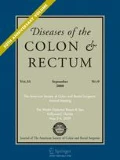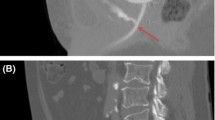PURPOSE
Prostate brachytherapy is gaining wide popularity as an alternative to resection for the treatment of locally advanced prostate cancer. Rectal-urethral fistula after prostate brachytherapy is a rare but serious complication, and its incidence, presentation, risk factors, and clinical management have not been well described.
METHODS
From January 1997 to October 2002, seven patients with rectal-urethral fistulas were referred to two institutions (Brigham and Women’s Hospital and West Roxbury Veteran’s Administration Hospital) of a major teaching referral center. Clinical presentation, risk factors, prostate staging, and clinical management were examined in a retrospective fashion.
RESULTS
Seven rectal-urethral fistulas developed from roughly 700 (1 percent) patients treated with prostate brachytherapy for prostate cancer. The average patient age was 67.7 years, preimplant prostate-specific antigen was 7.1, and Gleason score was 3+3. Symptoms occurred at a mean of 27.3 months after prostate brachytherapy was started and included anorectal pain (57 percent), clear mucous discharge (57 percent), diarrhea (43 percent), and rectal ulceration (43 percent). Coronary artery disease was a common comorbidity (71 percent). Previous transurethral resection of prostate (28 percent) and pelvic irradiation or external beam radiation therapy (14 percent) were not associated with increased risk of rectal-urethral fistula. All patients underwent a diverting colostomy (86 percent) or ileostomy (14 percent), and four patients went on to have definitive therapy. Definitive resection was performed between 5 and 43 months after diverting ostomy and was chosen on the basis of comorbid disease, quality of life, and degree of operation. Two patients required a second diversion after definitive resection because of anorectal pain and a colocutaneous fistula. Postoperative complications included myocardial infarction (14 percent), blood transfusion (14 percent), and bowel perforation (14 percent). Patients became symptom-free nine months after surgery. Six patients are alive and well today; one died from an unrelated cause.
CONCLUSIONS
Rectal-urethral fistula after prostate brachytherapy is a rare but devastating complication. Patients should be followed for at least three years after prostate brachytherapy because symptoms can develop late in the course. Although diversion of fecal stream does not heal the fistula, all patients diagnosed with rectal-urethral fistula should first undergo diverting ostomy to alleviate symptoms. Then, one should consider definitive resection and ostomy closure.




Similar content being viewed by others
REFERENCES
RT Greenlee T Murray S Bolden PA Wingo (2000) ArticleTitleCancer statistics, 2000 CA Cancer J Clin 50 7–33 Occurrence Handle1:STN:280:DC%2BD3c7pvFWrug%3D%3D Occurrence Handle10735013
J Sylvester JC Blasko P Grimm H Ragde (1997) ArticleTitleInterstitial implantation techniques in prostate cancer J Surg Oncol 66 65–75 Occurrence Handle1:STN:280:ByiH3sngt10%3D Occurrence Handle9290696
JC Blasko KE Wallner PD Grimm H Ragde (1995) ArticleTitlePSA-based disease control following ultrasound-guided I-125 implantation for stage T1/T2 prostate carcinoma J Urol 154 1096–9 Occurrence Handle1:STN:280:ByqA28vgsVY%3D Occurrence Handle7543606
KE Wallner J Roy L Harrison (1996) ArticleTitleTumor control and morbidity following transperineal I-125 implantation for Stage T1/T2 prostate carcinoma J Clin Oncol 14 1449–53
S Nag D Beyer J Friedland P Grimm R Nath (1999) ArticleTitleAmerican Brachytherapy Society (ABS) recommendations for transperineal permanent brachytherapy of prostate cancer Int J Radiat Oncol Biol Phys 44 789–99 Occurrence Handle1:STN:280:DyaK1MzhtlajtA%3D%3D Occurrence Handle10386635
RG Stock NN Stone (1999) ArticleTitlePermanent radioactive seed implantation in the treatment of prostate cancer Hematol Oncol Clin North Am 13 489–501 Occurrence Handle1:STN:280:DyaK1MzmtV2ruw%3D%3D Occurrence Handle10432424
DY Gelblum L Potters (2000) ArticleTitleRectal complications associated with transperineal interstitial brachytherapy for prostate cancer Int J Radiat Oncol Biol Phys 48 119–24 Occurrence Handle1:STN:280:DC%2BD3czps1amuw%3D%3D Occurrence Handle10924980
GH Jordan DF Lynch SS Warden JD McGraw GC Hoffman PF Schellhammer (1985) ArticleTitleMajor rectal complications following interstitial implantation of 125Iodine for carcinoma of the prostate J Urol 134 1212–5 Occurrence Handle1:STN:280:BimD3sjlslU%3D Occurrence Handle4057419
L Kleinberg K Wallner J Roy et al. (1994) ArticleTitleTreatment-related symptoms during the first year following transperineal 125I prostate implantation Int J Radiat Oncol Biol Phys 28 985–90 Occurrence Handle1:STN:280:ByuC1cnktVQ%3D Occurrence Handle8138452
NN Stone RG Stock (2002) ArticleTitleComplications following permanent prostate brachytherapy Eur Urol 41 427–33 Occurrence Handle1:STN:280:DC%2BD38zjtVynuw%3D%3D Occurrence Handle12074815
SK Kang RH Chou RK Dodge et al. (2002) ArticleTitleGastrointestinal toxicity of transperineal interstitial prostate brachytherapy Int J Radiat Oncol Biol Phys 53 99–103 Occurrence Handle12007947
D Theodorescu JY Gillenwater PG Koutrouvelis (2000) ArticleTitleProstatourethral-rectal fistula after prostate brachytherapy Cancer 89 2085–91 Occurrence Handle1:STN:280:DC%2BD3M%2FkvVaqtQ%3D%3D Occurrence Handle11066049
S Smathers K Wallner C Simpson J Roof (2000) ArticleTitlePatient perception of local anesthesia for prostate brachytherapy Semin Urol Oncol 18 142–6 Occurrence Handle1:STN:280:DC%2BD3cvotFeqtA%3D%3D Occurrence Handle10875456
K Hu K Wallner (1998) ArticleTitleClinical course of rectal bleeding following I-125 prostate brachytherapy Int J Radiat Oncol Biol Phys 41 263–5 Occurrence Handle1:STN:280:DyaK1c3mvVemtw%3D%3D Occurrence Handle9607339
ACKNOWLEDGMENTS
The authors thank Anne Burgess, R.N., for administrative and research assistance and Rebecca Betensky, Ph.D., for statistical analysis.
Author information
Authors and Affiliations
Corresponding author
About this article
Cite this article
Shah, S., Cima, R., Benoit, E. et al. Rectal Complications After Prostate Brachytherapy. Dis Colon Rectum 47, 1487–1492 (2004). https://doi.org/10.1007/s10350-004-0603-2
Published:
Issue Date:
DOI: https://doi.org/10.1007/s10350-004-0603-2




